Hi, I’m Lien Huong! This will be my blog for MDA20009!
Don't wanna be here? Send us removal request.
Text
[Week 10] The Internet: Digital utopia or cyber hell?
I know you’re probably tired of my long-winded, trying-to-be-funny introductions. So today, let’s keep it short and sweet!
Social media has revolutionized the way we communicate: faster, more convenient, and way more creative. (Seriously, who knew we’d be expressing emotions through GIFs and cat memes?)
But with great technology comes… well, new problems. And unfortunately, that includes a scarier, more powerful form of bullying. Imagine an embarrassing photo of you going viral, spreading across platforms at lightning speed for the world to see. Yikes.

So, dear readers, today we embark on one last adventure: Social Media Governance and Cyberbullying. Buckle up!
What is Social Media Governance?
Social media governance goes beyond just policies and regulations, it covers everything that shapes how we communicate online, from legal frameworks like copyright and freedom of expression to platform-specific rules (Flew, 2015).
In simple terms, it’s the system of rules and policies set by both governments and private institutions to regulate social media. This governance isn’t just about strict laws, it also includes informal guidelines, like community rules in Facebook groups. Plus, these regulations can vary from country to country, meaning what’s acceptable in one place might be restricted in another.
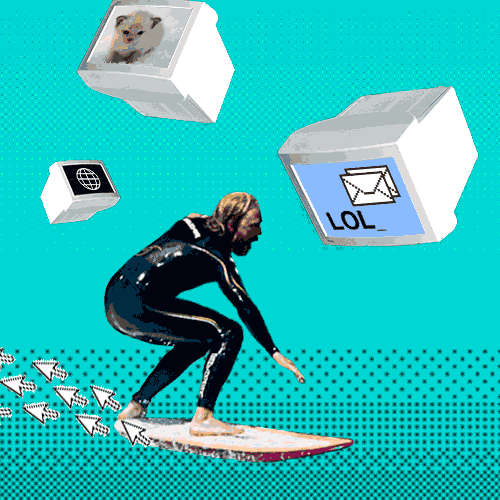
At its core, social media governance is all about who controls and manages digital spaces and what rules shape our online interactions.
Cyberbullying: The Shadows that follow you online
46% of U.S. teens aged 13 to 17 have experienced cyberbullying at some point. (Pew Research Center, 2022)
The rise of the internet has given way to a major issue: cyberbullying, the act of harming others through digital platforms. With technology’s reach, it’s more relentless than ever. Here’s how it happens:
😦 Insults: Degrading comments, body shaming, and threats in posts or messages.
😦 Embarrassing Media: Private photos/videos shared without consent or recordings of real-life bullying.
😦 Harassment & Rumors: Sexual harassment or false rumors spread to damage reputations.
Cyberbullying has led to many heartbreaking stories, one of the most tragic being Amanda Todd’s case in 2012. Amanda, a Canadian teen, was targeted by an online predator who blackmailed her with sensitive images. When she ignored him, he spread the photos online, ruining her reputation and making her a target for relentless bullying. Despite changing schools, the harassment followed her, leaving her isolated and distressed. In October 2012, after sharing her painful story in a YouTube video, Amanda tragically took her own life.
youtube
Her case gained worldwide attention, prompting international investigations and legal reforms in multiple countries to better protect victims of cyberbullying (Butts, 2024).
A problem with no escape?
With countless suicides linked to cyberbullying since the dawn of digital spaces, you’d think platform moderators and governments would have stepped up by now. But honestly? They’re doing a terrible job. In fact, social media feels more toxic than ever. Although they introduced new laws against online harassment, no one really takes them seriously.
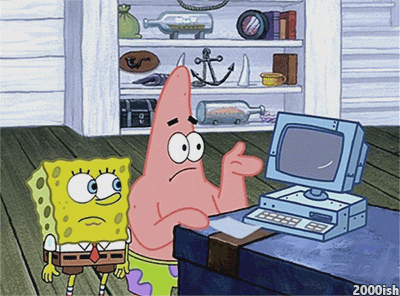
Post-pandemic, people have gotten way too comfortable online. And no platform embodies this better than TikTok, the capital of toxicity. If you enjoy reading comments like I do, you’ll find hate lurking under everything. Cute pet video? “You’re a terrible owner.” Someone eating? “Damn, you must be built like a bus driver.” And let’s not forget the art of turning someone’s happy moment into viral mockery.
Now, I won’t entirely blame moderators (though they should be way more aggressive). There are just too many users to manage, and even if trolls get suspended, they just make new accounts and keep going. Governments have tried limiting young users to shield them from harmful content, but let’s be real, kids just fake their age. Meanwhile, hateful content sneaks by under the guise of “personal opinion” or “constructive criticism.”

(With internet slang evolving at light speed, insults have become an art form. No wonder these people dodge bans like it’s a side quest.)
So yeah, the system is failing, and the internet is a mess. Sigh.
Quick fixes for now, real change needed
What should you do if you're being cyberbullied? Unfortunately, there’s no guaranteed way to avoid online harassment, bullies always find a way. But here’s what you can do: report them, block them, and if your country has laws against online harassment, take legal action. Most importantly, don’t let their words get to you. Stay strong and remember, what they say reflects them, not you. Also, be cautious about what you share online, and always think twice before posting anything personal so it won't be used against you.

As for solutions? Governments need to step up. No mercy for actions that can destroy lives. The only thing these people fear is real punishment—jail time or financial penalties that actually sting, like losing half a year’s worth of living expenses.
That’s all from me. Stay safe online, and thanks for reading!
References:
Atske, S. (2022, December 15). Teens and Cyberbullying 2022. Pew Research Center. https://www.pewresearch.org/internet/2022/12/15/teens-and-cyberbullying-2022/?utm_source=chatgpt.com
Butts, E. (2024, May 10). Amanda Todd Case. Www.thecanadianencyclopedia.ca. https://www.thecanadianencyclopedia.ca/en/article/amanda-todd-case
Flew, T. (2015). Social Media Governance. Social Media + Society, 1(1), 205630511557813. https://doi.org/10.1177/2056305115578136
0 notes
Text
[WEEK 9] How the Internet rescued a lost horror gem 🌹
This week, we’re switching from beauty to gaming!
Games come in all shapes and sizes, from casual puzzles and candy-crushing fun to full-on survival horror where your bullets are basically useless against a towering stalker.

(Words can't express how much I hate Mr. X from Resident Evil 2, ugh.)
But playing alone can feel a little…empty, don’t you think? Personally, I can’t finish a game without immediately rambling about it to my friends. What’s the fun in spotting a cool detail if you have no one to share it with? Thankfully, social media and forums make it easy to find like-minded gamers. Digital communities have transformed how we engage with this form of media. It’s not just about playing anymore, but also sharing, creating, and keeping games alive.

Today, I’m diving into a fascinating case that proves just how powerful these communities can be: Rule of Rose. This underrated gem is one of my all-time favorites, and I can’t wait to share its journey with you! Let’s get started!
🥀 Rule of Rose: The horror game that scared censors more than players

Rule of Rose (2006) is a survival horror game by Punchline for the PlayStation 2. Set in 1930s England, it follows Jennifer, a young girl trapped in a mysterious orphanage ruled by the Red Crayon Aristocrats, a cruel, hierarchical club. As she endures relentless bullying, Jennifer must navigate the eerie setting and uncover the orphanage’s dark secrets.

Rule of Rose tackled mature themes, much like other horror games of its time. Silent Hill explored disturbing cult rituals involving young girls, while Haunting Ground used stalker horror to reflect fears surrounding womanhood. These games thrived, with Silent Hill even becoming a phenomenon (can’t even count the times I went “This can’t be real” at these games).

(Haunting Ground – often called the "Don't get pregnant" game on TikTok, featuring stalkers obsessed with the protagonist's uterus. Disturbing, right?)
However, Rule of Rose faced a different fate. Sony Computer Entertainment refused to localize it for Western audiences, claiming it was too extreme for the company’s image. This fueled false rumors in Europe about the game featuring pedophilia, child burials, and sadomasochism (Wood, 2023).

(An article on the UK ban. Whoever said this was a kids' game?)
The backlash led to the UK release being canceled and countries like Poland, Italy, and France pushing for a ban, with media outlets falsely accusing the game of sexualizing children and promoting abuse (Wood, 2023; Baker, 2023).
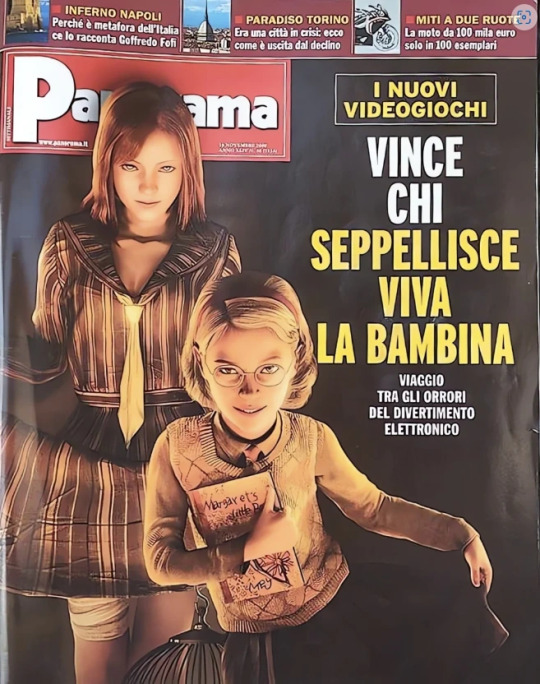
(An Italian article dug up a "problematic" side of the game, like burying little girls alive. Too bad none of it actually happened.)
While Rule of Rose tackles heavy themes like child cruelty, abuse, and trauma, many, including myself, see them as adding depth, not just shock value. The devs even studied real-life behaviors among young girls to make it authentic, which makes its unfair treatment even more frustrating. Imagine pouring your heart into something, only for people to completely misrepresent it!
🌹 The Resurrection of Rule of Rose: How Social Media Cults Worked Their Magic
Due to Rule of Rose being banned in several countries and receiving little marketing, it barely sparked any discussion upon release. Finding content about it at the time was nearly impossible. For years, it seemed doomed to obscurity, until something unexpected happened. In the 2010s, nostalgia for PS2 horror titles like Kuon, Clock Tower, and Silent Hill surged, and with it, Rule of Rose finally gained recognition, even acquiring a dedicated cult following (Bird, 2024). As for me, I stumbled upon this hidden gem thanks to TikTok!

(PS2 horror nostalgia is still thriving! With games like Silent Hill 2 getting remakes, the community is more alive than ever!)
🌹And then, discussions about the game’s history, complex characters, and intricate storytelling suddenly spread across social media! 🌹
🌹On YouTube, video essays analyzing its plot and themes have racked up impressive view counts, with some reaching 700,000 to nearly a million views. Not too shabby for a game that was practically buried by controversy, right? You can even find recent covers of its haunting original soundtrack, A Love Suicide.
youtube
🌹 Meanwhile, over on Twitter (or X, if you insist), Rule of Rose fans are keeping the conversation alive. You’ll see everything from casual "This game is amazing!" posts to detailed breakdowns so intense you'd think the game was under a microscope in a science lab. Fan accounts, artworks, and passionate debates continue to breathe life into this once-forgotten gem.

(A fan account on Twitter)
🌹 And if you’re curious about the game but don’t feel like dropping a casual $600 on a physical copy (seriously, that’s how much it goes for now, collector’s curse), plenty of walkthroughs and streams on YouTube and Twitch let you live through the madness (no wallets are harmed in this experience).

(Hope you're ready for a year of ice soup if you want a physical copy…)
And guess what? Punchline’s staff has even shown interest in remaking the game for modern consoles after seeing all the love for it (even if the chances are pretty slim). Still, that’s pretty awesome, you have to admit!
Whether people are drawn to Rule of Rose for its rarity, its rocky history with the media, or its artistic storytelling, they’ve all played a part in keeping it alive. Its fate did a complete 180 like a celebrity suddenly going viral overnight!
🌹 The Ultimate Side Quest: How Social Media Transforms Gaming
So, wow. If you weren’t already impressed by the power of digital communities, you probably are now (or maybe from one of my previous posts, if I happened to go on a similar rant). Seriously, they can flip situations upside down like pancakes. From politics and activism to gaming, there’s pretty much nothing they can’t do!
Social platforms have completely reshaped what it means to engage with games, taking the experience to a whole new level. You’re no longer just sitting alone with your console, you’re stepping into a bustling headquarters (aka social media), where you can cook (fan art, fanfiction), work (discuss games), or battle with others (debate people with wildly different opinions).

Sure, things can get a little intense sometimes, but there’s no denying that these platforms have given games a second life, preserving their legacy and introducing them to new audiences in ways that go beyond just yapping about them (because let’s be honest, sometimes words alone don’t cut it).

Well, that’s it for today’s blog! Gotta stop myself before I get too carried away on this topic. See you next time!
References:
Baker, T. (2023, October). The Shocking Truth Behind Rule of Rose’s Price Tag - Upside Down Shark. Upside down Shark. https://upsidedownshark.com/features/the-shocking-truth-behind-rule-of-roses-price-tag/
Bird, J. (2024, September 24). Syndicated Comics. The Beat. https://www.comicsbeat.com/horror-beat-how-rule-of-rose/
Wood, J. (2023, May 16). Rumors Can Ruin a Game: Rule Of Rose. DREADXP. https://www.dreadxp.com/editorial/rumors-can-ruin-a-game-rule-of-rose/
0 notes
Text
[Week 8] The Good and the Bad of Filters: Are we using them, or are they using us?
Ever wondered what it feels like to float in space or how you'd look with a perfectly sculpted jawline without stepping into a rocket or undergoing surgery? Thanks to technology, these once-impossible experiences are now just a tap away!

The rise of digital filters has opened up a world of possibilities, offering everything from whimsical fantasy effects and hilarious distortions to striking visual enhancements and beauty transformations. With countless filters available, their entertainment value can be so captivating that people find themselves hooked, much like getting lost in a video game for hours.

At first glance, filters seem like harmless fun. After all, they’re not real. But not everyone sees them that way.
Join us as we dive into the world of filters, from their origins to their growing influence on society!
A brief history and evolution of AR filters
Filters are a product of Augmented Reality (AR) technology, which blends real-world environments with digitally generated visuals. The origins of AR date back to 1968 when Ivan Sutherland developed a head-mounted display that allowed users to see computer-generated graphics overlaid onto their surroundings (Liu, n.d.).

(Does this filter look familiar to you?)
The rise of AR filters on social media took off in 2013 when Snapchat introduced its first filter feature, Lenses. This innovation enabled users to apply real-time effects—like dog ears or flower crowns—directly onto their faces. Ji (2024) argued that the success of Lenses transformed social media interactions and inspired other platforms to explore AR filters and user-generated content. The article also highlighted how this technology expanded across various social media platforms.

💡In 2016, Instagram integrated filters into its Stories feature, enhancing both visuals and storytelling. The platform took things further in 2019 with the launch of Spark AR Studio, empowering creators to design custom filters.

(With TikTok's wacky filters, joining the latest trends is simply irresistible!)
💡TikTok’s rapid growth has been largely driven by its diverse range of filters, many of which spark viral trends and challenges.

💡Meanwhile, Facebook began experimenting with AR in 2014. By 2020, the company introduced a suite of AR tools designed to help businesses create interactive advertisements.
AR Filters: A double-edged sword
So, AR filters are just computer-generated visuals placed over the real world, what possible good can they do?

Sanchez et al. (2022) highlight several benefits of AR filters on social media:
👍 They enhance sensory experiences, fulfilling hedonic needs.
👍 Their versatility spans entertainment, shopping, and beyond, making interactions more engaging.
👍 As a marketing tool, they boost brand engagement through visuals and storytelling.

(Coca-Cola's 2023 AR advertisement let consumers interact with a billboard using their phones.)
But like everything else, AR filters aren’t all sunshine and rainbows, especially when it comes to beauty. You can probably guess where this is going, right?
Barker (2020) explored the negative impact of AR filters on beauty perceptions through a study on Snapchat’s Lenses:
👎 They promote unrealistic beauty standards by altering features like eye size, nose shape, and skin tone, often erasing cultural diversity in the process.
👎 They can fuel insecurities, guilt, and even body dysmorphia, making people feel like they don’t measure up, without realizing that “everyone else” might also be using filters to achieve that flawless look.

Seeing Through the Filter: Mindful AR Use
AR filters aren’t inherently bad, instead, far from it! The real issue lies with the brands that create filters that spark controversy. So, before you fall down the digital rabbit hole, here are a few things to keep in mind when using AR technology:
🙂↕️ Filters aren’t reality. They’re just fancy computer graphics.
🙂↕️ They’re meant for fun and interaction. So don’t take them too seriously, especially when it comes to your appearance.
🙂↕️ Don’t let filters mess with your self-esteem. If someone looks too flawless, chances are they’re stacking filters like pancakes. Don’t compare yourself to an illusion.
🙂↕️ Call out brands that create problematic filters. Removing natural features to fit a narrow beauty standard? Big no. Beauty is in the eye of the beholder, not in the hands of a tech company.

Beauty and technology can be a messy mix, often fueling insecurities. But if you can tell the difference between reality and digital illusion, AR filters won’t be a big deal.
And that’s a wrap for today’s blog! Thanks for sticking around till the end, now go enjoy filters responsibly!
References:
Barker, J. (2020). Making-up on mobile: The pretty filters and ugly implications of snapchat. Fashion, Style & Popular Culture, 7(2), 207–221. https://doi.org/10.1386/fspc_00015_1
Ibáñez‐Sánchez, S., Orús, C., & Flavián, C. (2022). Augmented reality filters on social media. Analyzing the drivers of playability based on uses and gratifications theory. Psychology & Marketing, 39(3), 559–578. https://doi.org/10.1002/mar.21639
Ji, X. (2024, November 6). The brief history of social media AR filters. Byteplus.com. https://www.byteplus.com/en/topic/36741?title=the-brief-history-of-social-media-ar-filters
Liu, J. (n.d.). History Exhibit. Courses.cs.washington.edu. https://courses.cs.washington.edu/courses/cse490h1/19wi/exhibit/ar-tech.html
0 notes
Text
[Week 7] How social media turns our bodies into construction sites 😦
People always say personality matters most, but on social media, looks take the spotlight. Behind the screen, no one truly knows you, so physical appearance becomes the key factor in online judgment. After all, who wouldn’t prefer admiring an attractive face over reading a list of personality traits and achievements?

It’s no surprise that many modify their bodies to go viral. They’re just giving the public what it wants, right? But at what cost?
You’ve probably guessed it—this blog dives into how social media shapes beauty standards and fuels the rise of body modification.
Aesthetic templates: Hey, you look pretty, can I steal your look?
On social media, beauty standards are often shaped by aesthetic templates: common poses, makeup styles, or body modifications that users follow. In short, these templates define the beauty ideals popularized online.
According to Petter (2024), celebrities like Bella Hadid and Kylie Jenner have influenced a new beauty industrial complex that promotes a single, idealized look. This standard, Instagram Face, features high cheekbones, catlike eyes, long lashes, a small nose, and plump lips.

(Before and After: The Instagram Face)
TikTok takes beauty scrutiny even further, analyzing every feature of the body. (Benko, 2022). Thousands of beauty trends emerge weekly, often under hashtags like #sideprofilechallenge, where users film their side profiles to Avril Lavigne’s Girlfriend. The trend was later criticized for reinforcing Eurocentric beauty ideals, particularly the preference for upturned noses (Morgan, 2022).

Douyin makeup has been taking over social media, especially in Asia (I swear I see it more than I see my own parents). This trend originates from the Chinese platform Douyin and is known for its soft, pink-tinted look, blurred lips, prominent eye bags, and shimmery eyeshadow.
youtube
While some trends, like makeup styles, are (pretty) harmless fun, others raise more serious concerns (I'm talking about you, Instagram Face). This obsession with idealized features not only erases cultural beauty diversity but also begs the question: Doesn’t following these trends make everyone look the same? Why sacrifice what makes you uniquely you?
Pornification: The extreme attention hack
Ever scrolled through your feed and gotten jump-scared by someone's "uncensored melons"? If you're an X devotee, probably more times than you'd like.

(An illustration for this, because I’d rather not get my account thrown into the void.)
This, my dear reader, is pornification, the blending of sexual imagery into mainstream culture. It often overlaps with body modification, whether through editing, surgery, or extreme posing, all in the pursuit of looking more desirable.
According to Berger & Milkman (2012), content that sparks strong emotions, including sexual ones, grabs more attention. No wonder it’s a go-to strategy for monetization (cough OnlyFans).
Debates around pornification are split: some see it as empowerment, others as harmful. Studies suggest self-sexualization can increase the risk of eating disorders, body objectification, and even sexist beliefs.
So, is it self-expression or self-exploitation? That’s for you to decide.
All the pain of body modification… for what?
Thawanyarat (2023) reported a rise in cosmetic surgery driven by social media. A 2023 survey found that 72% of plastic surgeons said their patients sought procedures to enhance their appearance in social media photos, while the desire to look like microcelebrities led to a 15% increase in cosmetic surgery consultations among adults (Gupta, 2024).

Despite the risks, including life-threatening complications, people continue to undergo these procedures because of social media. But why? Let’s dive deeper:
👉 Seeking approval is natural, and many people feel insecure when they don’t perform well on social media (Squire, 2016). This pressure drives some to alter their appearance just to fit in.
👉 Social media algorithms favor trends over originality, forcing creators to self-censor (Duffy & Meisner, 2023). As a result, many engage in harmful trends to gain recognition.
👉 Social media promotes the idea that bodies must be constantly improved and showcased. Lacking awareness of the risks, many turn to body modification, believing it’s the path to self-betterment.
A journey to loving our bodies again 💪
It's alarming how far people go for online approval, even at the cost of their health. But we can change this, starting now! Here’s what we should remember and share with others:
⭐ Health comes first. Before making drastic changes, ask yourself: will those who liked your post cover your hospital bills if something goes wrong?
⭐ You are unique. Chasing trends for temporary validation isn’t worth it, especially when your body doesn’t have a Ctrl+Z.
⭐ Social media isn’t reality. Filters and edits distort the truth. Always fact-check before following trends or tutorials.
⭐ Spread awareness. Create inspiring content like posters, videos, or messages to promote self-acceptance. Use hashtags to get others involved!

And that is it for today’s blog! Remember to love yourself and help others love themselves too!
References:
Benko, J. (2022, April 25). TikTok’s unrealistic beauty standards and how they damage us. Brig Newspaper. https://brignews.com/2022/04/25/tiktoks-unrealistic-beauty-standards-and-how-they-damage-us/
Berger, J., & Milkman, K. L. (2012). What Makes Online Content Viral? Journal of Marketing Research, 49(2), 192–205. https://doi.org/10.1509/jmr.10.0353
Dr Rajat Gupta. (2024, September 21). Dr Rajat Gupta - RG Aesthetics. Dr Rajat Gupta. https://drrajatgupta.com/insta-fame-and-image-the-social-media-influence-on-cosmetic-surgery-trends/
Duffy, B. E., & Meisner, C. (2022). Platform Governance at the margins: Social Media Creators’ Experiences with Algorithmic (in)visibility. Media, Culture & Society, 45(2), 016344372211119. https://doi.org/10.1177/01634437221111923
Morgan, L. (2022, May 5). Why Fans Are So Divided About The Side Profile TikTok Trend. Glamour UK. https://www.glamourmagazine.co.uk/article/side-profile-trend-tiktok
Petter, O. (2024, April 28). Are we all going to end up with the same face? The Independent. https://www.independent.co.uk/life-style/beauty-features-same-face-instagram-b2534111.html
Squier, C. (2016, May 13). Why Do We Care So Much About “Likes” On Social Media? Grazia; Grazia. https://graziadaily.co.uk/life/opinion/care-likes-social-media/
Thawanyarat, K., Hinson, C., Gomez, D. A., Rowley, M., Navarro, Y., Johnson, C., & Venditto, C. M. (2023). #PRS: A Study of Plastic Surgery Trends With the Rise of Instagram. Aesthetic Surgery Journal Open Forum, 5. https://doi.org/10.1093/asjof/ojad004
1 note
·
View note
Text
[Week 6] Stylish and Ethical: How to One-Up Fast Fashion devotees ❤️🔥
Get on Instagram, and boom! There’s a trendy outfit taking over your feed. You think, "Hey, I’d look amazing in that." A few scrolls later, you switch to TikTok, only to find an entirely different set of must-have clothes. The urge to buy strikes again. Before you know it, you're on a full-blown shopping spree, filling your cart with pieces that will be so last season after three social media posts.

And the best part? You’ve just contributed to world pollution. (Okay, not exactly the highlight I promised you.)
Congratulations! You’re officially a victim of fast fashion!
Still not sure what the fuss is about? In today’s blog, I’ll break down why fast fashion is a problem and, more importantly, how you can rock stylish outfits ethically with slow fashion. Let’s dive in!
💔Why Fast Fashion is a big Nuh-Uh
Domingos et al. (2022) found that fashion brands used to release only two collections per year - now, they drop 50 to 100 mini-collections annually. No surprise, then, that fashion is one of the most polluting industries.

(According to Live Frankly (2024), Zara releases over 24 trend-driven collections and 20,000 designs each year... Who's going to buy all that?)
This rapid increase gave rise to fast fashion, where brands mass-produce and market clothes quickly and cheaply to keep up with trends, rather than focusing on quality and sustainability (Hardy, 2024).
Still not feeling guilty about hoarding piles of cheap outfits? Here are some facts that might just be your wake-up call!

Igini (2022) highlights some shocking fast fashion facts:
👎 93 billion cubic meters of water are used yearly, enough to build a house out of water cubes (if that were a thing).
👎 60% of fast fashion items are made from plastic-based fabrics, aka pollution's MVP due to its never-ending lifespan.
👎 Less than 11% of brands have recycling strategies, leading to over $500 billion lost from wasted clothing.
👎 59% of fashion brands in Europe make false sustainability claims to retain customers.

Aside from being a major environmental issue, did you know that the stylish clothes you wear may also be the products of unethical labor? Shein, a Chinese fast fashion giant, is said to have employees work 75 hours per week at poor wages (Edwards, 2024). Can you fathom working so hard for so little?
💖Why slow fashion is a big Yuh-Huh
As the name implies, slow fashion contrasts with fast fashion by prioritizing quality, sustainability, and ethical production (Domingos, 2022). The research indicates that as consumers grow more conscious of fair labor practices and environmental impact, interest in slow fashion continues to rise.

Sounds like something a responsible citizen would support, right? But here’s the best part. Investing in slow fashion isn’t just the ethical choice, it also makes you look effortlessly stylish beyond fleeting trends!
According to Weaving Vibes (2024), a textile expert with 36 years of experience, slow fashion isn’t just about sustainability. It’s also an artistic choice:
✨ Express your uniqueness: Ditch fast-changing trends and develop a style that truly reflects you.
✨ Build a timeless wardrobe: Invest in versatile pieces that mix and match effortlessly, sparking creativity in your outfits.
✨ Celebrate craftsmanship: Choosing slow fashion supports skilled artisans and keeps traditional craftsmanship alive in a world of mass production.
So, what’s better than being both ethical and stylish? After all, knowledge is the ultimate fashion statement!

💖A quick guide to getting into Slow Fashion
Now that you've glimpsed the glorious world of slow fashion, you’re probably wondering: How do you actually embrace it? Here are some simple tips to become ethically stylish:
✨ Define your style: Skip fleeting trends and embrace what truly speaks to you. From fairycore to punk, YouTube is packed with guides to help you refine your aesthetic.
✨ Pick sustainable fabrics: Opt for eco-friendly materials like linen, organic cotton, and bamboo to reduce environmental impact.
✨ Support ethical brands: Choose made-to-order or small-batch brands for quality, uniqueness, and sustainability.
✨ Thrift with intention: Shopping second-hand cuts waste, lowers your carbon footprint, and helps you score unique finds—many thrift shops are even online!
✨ Speak up: Raise awareness about fast fashion’s ethical issues and advocate for a more responsible industry.
youtube
Wrapping up…
While fast fashion may be trendy, its questionable ethics and poor quality often lead to wasted money. In contrast, slow fashion offers durability and uniqueness. So, as a responsible digital citizen, you know what to do! Start making conscious fashion choices, spread awareness, and consider joining fashion activism online.
References:
Domingos, M., Vale, V. T., & Faria, S. (2022). Slow Fashion Consumer Behavior: A Literature Review. Sustainability, 14(5), 1–15. https://ideas.repec.org/a/gam/jsusta/v14y2022i5p2860-d761810.html
Edwards, C. (2024, May 12). Shein suppliers still working 75-hour weeks, report says. BBC. https://www.bbc.com/news/articles/cg67w73nxqxo
Frankly, L. (2023, February 10). How Sustainable is Zara? | Sustainable Fashion. Live Frankly. https://livefrankly.co.uk/sustainable-fashion/how-sustainable-is-zara-and-can-i-shop-there-with-a-clean-conscience/
Hardy, A. (2024, April 24). Everything You Need to Know About Fast Fashion. Vogue; Vogue. https://www.vogue.com/article/what-is-fast-fashion
Igini, M. (2022, June 21). 11 Fast Fashion Facts You Might Not Know. Earth.org. https://earth.org/fast-fashion-facts/
Weaving Vibes. (2024, June 18). The Beauty of Slowing Down Discovering the Benefits of Slow Fashion. WeavingVibes. https://weavingvibes.com/blogs/blog/the-beauty-of-slowing-down-discovering-the-benefits-of-slow-fashion?srsltid=AfmBOop02_kEAqOFrEPhihUiz7b654_ff5BUCV-xU0SnBs4olnyIbgTj
0 notes
Text
From Scroll to Impact: The Role of Digital Citizens
The internet has evolved from passive scrolling to an interactive space where we shape conversations, debate issues, and influence public discourse. In this digital age, being a good citizen isn't just about the real world as it extends online too.
But how does social media shape our role as digital citizens? And how do we, in turn, drive change? Therefore, in today’s blog, let’s dive into the evolving world of digital citizenship and explore how social media influences our engagement with politics!

What It Means to Be a Digital Citizen
The idea of digital citizenship has grown alongside technology, but its core meaning stays the same: the ability to engage in civic activities like social and political discussions online. Mike Rubble breaks digital citizenship down into nine key categories, which, when followed, are believed to help students become responsible digital citizens (Sadiku et al., 2018). So, let’s dive into these nine elements because if you’re going to roam the digital world, you might as well do it like a pro your WiFi would be proud of.
👉Digital Access: Getting a front-row seat in the online world, if you have the right tools.
👉Digital Commerce: Buying and selling with just a few clicks.
👉Digital Communication: Delivering your thoughts through the screens.
👉Digital Literacy: Knowing your way around tech so it doesn’t outsmart you.
👉Digital Etiquette: Screens don’t excuse bad manners, so be a decent human online.
👉Digital Law: What you do online does have consequences, so think before you click or post.
👉Digital Rights & Responsibilities: Freedom to post, but also the duty not to be that person.
👉Digital health and wellness: To contribute positively, you need to be both mentally and physically well.
👉Digital Security: Always be prepared to ensure data safety.
At its core, being a digital citizen isn’t all that different from being a citizen of a country, right? It’s about using good judgment, treating others with respect, and protecting your personal information, all of which help make online spaces safer and more welcoming for everyone (University of Michigan, 2010).
Platformization: Social Media’s Control Over Digital Spaces
Being a digital citizen means having a place to call home in the digital world… and that home is… social media!
These days, it’s rare to find someone without social media—even elders who once frowned upon technology have joined in, fueling the rise of platformization. This happens when digital platforms become deeply embedded in everyday life, businesses, and government operations, shaping the way people think, act, and interact (Poell et al., 2019). Each platform has its own unique features, shaping user behavior as algorithms control what people see and how they engage. This, in turn, influences political narratives. For instance, Milmo (2021) reports that Twitter has acknowledged amplifying content from right-wing politicians and news sites more than left-wing ones.

Political Engagement in the Social Media Era
The rise of social media has made politicians and related content as present online as our friends and family. This has given us greater exposure to the political world, along with the ability to engage with politicians, join debates, and participate in activism more easily.
Black Lives Matter, a movement against anti-Black racism, highlights social media’s power in activism. By March 2023, over 44 million #BlackLivesMatter tweets had flooded Twitter, proving how online platforms can amplify social and political issues, mobilize action, and demand justice (Bestvater et al., 2023).

However, while social media grants voices, it also deepens political bias. A Pew Research Center study found that platforms shape political views, as Facebook content leans liberal, while X is split between liberal and conservative. In the latest U.S. election, Kamala Harris' affiliates ran Democratic ads on Facebook and Instagram to sway undecided voters, while Trump’s allies, backed by Elon Musk, dominated X with Republican ads (O’Sullivan & Tolan, 2024; Stelter, 2025). Musk further skewed the playing field by offering $1 million per day to those registering for America PAC, a super committee supporting Trump’s campaign (Cohen, 2024). With the flood of ads, propaganda, and misinformation, staying rational becomes a challenge, making it easy to be swayed. Therefore, digital literacy is essential for making informed political decisions today, as powerful figures take advantage of social media and algorithms to spread bias and influence public opinion.

(Thadani & Navarro, 2024)
The Challenges of Digital Citizenship
Being a digital citizen can feel like juggling a thousand voices at once, louder, faster, and way more chaotic than traditional citizenship. Social media offers endless knowledge and discussions, but filtering truth from misinformation is no easy task. Add in relentless trolling, and it's tempting to fire back with anger. Yet, practicing good digital habits (and following Rubble’s nine key principles) can help us grow into responsible digital citizens who make the online world as well as the real one a better place.
References
Bestvater, S., Gelles-Watnick, R., Odabaş, M., Anderson, M., & Smith, A. (2023, June 29). #BlackLivesMatter Turns 10. Pew Research Center: Internet, Science & Tech; Pew Research Center. https://www.pewresearch.org/internet/2023/06/29/blacklivesmatter-turns-10/
Cohen, M. (2024, October 20). Elon Musk’s daily $1 million giveaway to registered voters could be illegal, experts say. CNN. https://edition.cnn.com/2024/10/20/politics/elon-musk-voter-giveaway-legal-questions/index.html
Donie O'Sullivan, & Tolan, C. (2024, October 15). Why the Harris campaign has spent $11 million on a Facebook page with 1,000 followers. CNN. https://edition.cnn.com/2024/10/15/politics/daily-scroll-facebook-harris-campaign-ads/index.html
McClain, C., Anderson, M., & Gelles-Watnick, R. (2024, June 12). How Americans Navigate Politics on TikTok, X, Facebook and Instagram. Pew Research Center. https://www.pewresearch.org/internet/2024/06/12/how-americans-navigate-politics-on-tiktok-x-facebook-and-instagram/
Milmo, D. (2021, October 22). Twitter admits bias in algorithm for rightwing politicians and news outlets. The Guardian. https://www.theguardian.com/technology/2021/oct/22/twitter-admits-bias-in-algorithm-for-rightwing-politicians-and-news-outlets
Poell, T., Nieborg, D., & van Dijck, J. (2019). Platformisation. Internet Policy Review, 8(4), 1–13. https://doi.org/10.14763/2019.4.1425
Sadiku, M. N. O., Tembely, M., & Musa, S. M. (2018). DIGITAL CITIZENSHIP. International Journal of Advanced Research in Computer Science and Software Engineering, 8(5), 18. https://doi.org/10.23956/ijarcsse.v8i5.606
Stelter, B. (2025, February 13). Trump’s world is all happening on X. CNN. https://edition.cnn.com/2025/02/13/media/trumps-world-is-all-happening-on-x/index.html
Thadani, T., & Navarro, A. (2024, October 7). Democrats dominate spending on political ads – except on Elon Musk’s X. Washington Post; The Washington Post. https://www.washingtonpost.com/technology/2024/10/07/musk-trump-x-ads/
University of Michigan. (2010). Are You a Good Digital Citizen? | Social Integrity. Umich.edu. https://socialintegrity.umich.edu/a-good-digital-citizen/
0 notes
Text
Reality TV and Social Media: The rocky love affair
Since the 2000s, reality TV has taken over television, and there’s no escaping it. Turn on your TV, and MasterChef is plating its latest dish. Switch channels, and The Voice is trending. Flip again, and, oh look, old episodes of The Amazing Race are running on loop.
With reality TV dominating screens, one question remains at the heart of the discussion: Are these shows truly unscripted and free from external influence? After all, they’re called reality shows, and the people behind them are professionals… so why on earth would they care about a bunch of internet nobodies screaming the same thing over and over on social media?
And your honor…

THAT STATEMENT CONTRADICTS THE FACTS!
As time goes on, more people than ever are online, debating everything from memes to activism. Reality TV has seized this, ramping up social media engagement to boost popularity. Judges are no longer the sole decision-makers as the entire internet now has a seat at the jury table.
Therefore, let's get ready for an in-depth look at how reality TV and digital communities interact, and how social media shapes your favorite shows!
What is reality TV?
Reality TV follows real people in everyday situations, with no scripts or actors (supposedly). It includes documentaries (Keeping Up with the Kardashians), competitions (The Voice), and makeovers (Queer Eye). The drama and suspense keep viewers hooked, while contestants’ emotional stories make audiences feel connected.

Reality TV in the Digital Spotlight
Liveness
Deller (2019) noted that reality TV sparks significant social media discussion, especially during broadcasts, with thousands of tweets. The Council for Research Excellence found that 16% of TV viewers use social media while watching (Jeanmendozap, 2024). The "liveness" of these shows fosters unity, encouraging real-time engagement and shared connections.
Memes & GIFs
Humorous moments and iconic lines from reality TV often become viral memes and GIFs, extending the show's impact and relevance, sometimes outlasting the show itself (Deller, 2019). As a result, many shows leverage official accounts to engage fans by sharing memes and creating their jokes, aiming to capitalize on humor.

Take this iconic Gordon Ramsay meme! Everyone knows it's from Hell’s Kitchen, even if they’ve never watched it. It’s still viral today, and that proves memes keep shows alive longer than reruns!
Online communities
Many reality TV fandoms go beyond entertainment, using shows to discuss social issues like gender equality and representation. RuPaul’s Drag Race, for example, is praised for LGBTQ+ representation but also criticized for racism and transphobia. Critics argue that Black queens often receive the “villain edit,” reinforcing harmful stereotypes (Menchavez, 2021).
Contestant and Social Media
Many contestants use social media to engage with fans, but some claim producers control their image, leading to false portrayals. After the show, they often use social media to correct misrepresentations and gain support for future projects. For example, MasterChef winner Christine Ha leveraged both her talent and fan support to successfully open a restaurant in Houston after the show.
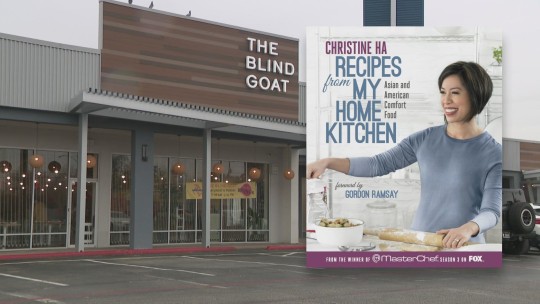
Unscripted? Think Again: Fans Rewrite Reality TV
As you can see, reality TV and social media go hand in hand in the digital age, giving producers not only a direct line to fans but also a real-time glimpse into audience preferences. To keep viewers hooked, reality shows constantly evolve: if fans want drama, producers serve it up; if a contestant becomes a fan favorite, they get the spotlight. After all, how can producers ignore the very people keeping their show alive? In some cases, a few viral posts from so-called "nobodies" can be enough to shape a show's future!
Hannah Brown, a standout contestant from The Bachelor Season 15, captured fans’ hearts with her authenticity and charisma, which shone through on social media.

Her genuine personality made her a fan favorite, which led to her return in 2023 for Bachelor in Paradise. Given her popularity, she was given plenty of screen time in some episodes, keeping viewers hooked with her presence.
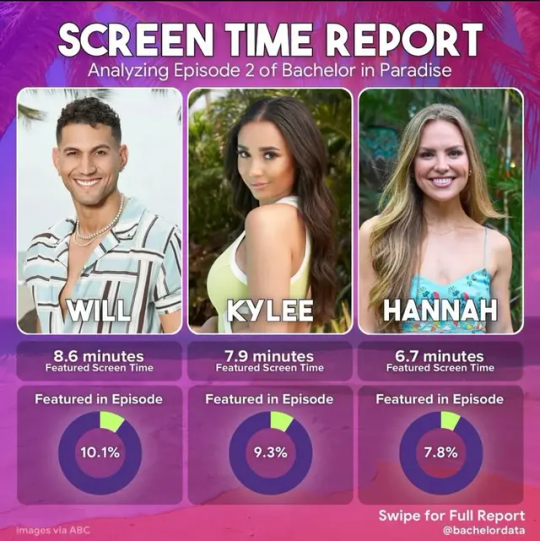
(Somers, 2023)
The future of reality TV
Reality TV shows aren't going anywhere anytime soon, as it's in our nature to get wrapped up in drama, even if it has nothing to do with us. The genre has evolved, though. It's no longer confined to TV: it's converging with new technologies and platforms, giving birth to a form of transmedia storytelling. Now, reality shows can be created by TikTokers or YouTubers, not just professionals with big budgets.

So yes, reality TV is here to stay, but I believe its authenticity will slowly slip away. Producers are more focused than ever on fan reactions on social media, and it's only a matter of time before they tailor everything to viewers' preferences in a bid for higher ratings. Social media and reality TV may seem like the perfect duo, constantly fueling each other's success, but sooner or later, the audience's voice will take the reins.
References:
Deller, R. A. (2019). Reality Television in an Age of Social Media.
Jeanmendozap. (2024, May 8). Reality Check: The Intersection of Social Media and Reality TV. Medium. https://medium.com/@jeanmendozap5/reality-check-the-intersection-of-social-media-and-reality-tv-901a2bfa3b0e
Menchavez, A. L. (2021). RuPaul and Drag Race: Racism, fracking, and transphobia galore. The Daily of the University of Washington. https://www.dailyuw.com/opinion/critical_conversations/rupaul-and-drag-race-racism-fracking-and-transphobia-galore/article_945fbd6c-9b0a-11ea-81db-ff871a85f1cc.html
Somers, S. (n.d.). bachelordata. Instagram.com. https://www.instagram.com/bachelordata/
0 notes
Text
The Internet’s Forgotten Kingdom: A Nostalgic Dive Into Tumblr
Tumblr may have fallen from its peak, but it remains an iconic platform. Back in 2015, I spent countless hours lost in fandom tags, admiring fan art, dissecting wild theories, and laughing at the same meme for the fifth time.
Then, one day… Tumblr imploded. Everyone scattered to Twitter, and I was too young to understand why my digital home had crumbled. Now, years later, I’m finally piecing together the mystery like a detective on a cold case. And sometimes, when I see a lowercase t, I still feel a pang of nostalgia.

So… what is Tumblr?
David Karp, frustrated by social media’s lack of creativity, built Tumblr, a microblogging site for sharing text, images, videos, and GIFs while fostering a supportive community (Matthias, 2024). Its standout features include customizable profiles, reblogging with hashtags, and anonymity, allowing users to hide their online status- perfect for avoiding the dreaded “why are you online but not replying? :(” texts.
The rise and fall of Tumblr
By May 2013, 108.4 million blogs and 75.8 million posts were being created on Tumblr every day (Hillman et al., 2014). According to Baier (2023), Tumblr’s rise had already begun in 2011, with more than ten billion blog posts created, reaching its peak in 2014. The platform’s influence even gave birth to a fashion trend, the “Tumblr aesthetic,” which dominated the 2010s.

But, like all good things, it didn’t last.
In 2013, Yahoo purchased Tumblr for over $1 billion, beginning its decline. As Baker (2024) points out, Yahoo’s aggressive advertising and changes in content moderation shook Tumblr’s core identity and estranged its dedicated user base. Tumblr’s policy of allowing adult content also clashed with Yahoo’s monetization goals, leading to the platform’s eventual sale to Verizon Communications in 2017 (Baker, 2024).
But maybe, just maybe, there was still hope. Right?
Sadly, no. Verizon shocked everyone by implementing a ban on NSFW content, including artistic and educational material on health. Tumblr’s mission to break down creative boundaries was now betrayed, and both LGBTQ+ communities and artists lost the digital home they’d built. Their once-beloved platform was no more.

Tumblr Culture 101: Where Fandoms Thrived and Social Justice Roared
So, what’s the secret sauce that makes Tumblr so addictive? Drumrolls, if you please…
✨Sauce #1: Fandoms✨
Tumblr is inseparable from fandoms - communities built around shared love for shows, books, and games. Whether you're looking for fan art, fanfiction, character analysis, or lighthearted debates, Tumblr delivers. Its unique vernacular, combined with hashtags, makes content easy to find, with terms like OTP (One True Pairing) for favorite fictional couples and AU (Alternate Universe) for fanfiction set in different worlds.

✨Sauce #2: Activism✨
Beyond the fandom posts that stir up all kinds of feels, Tumblr also serves as a haven for minority communities, particularly LGBTQ+ individuals, who use the platform to share their experiences and advocate for change. McCracken et al. (2020) argue that Tumblr’s role in fostering liberal and progressive activism is often neglected, especially since it doesn’t get as much attention as Facebook or Twitter. However, by utilizing a mix of media, Tumblr serves as an endless vault of knowledge consisting of educational resources, news articles, and personal stories that fuel activism and strengthen community solidarity (McCracken et al., 2020). Additionally, Tumblr's anonymity provides a safe space for young feminist girls to voice their opinions on issues like sexism or rape culture, with many noting that it feels much safer than Facebook or Twitter, where they risk facing public shaming or trolling (Keller, 2020).

Tumblr: A Lost Opportunity for a Digital Public Sphere
Everyone longs for a space where their voice can be heard without discrimination, an ideal public sphere. Habermas (1964) described this as a place where all citizens engage in open debates, ensuring equal participation and freedom from external control. Tumblr, with its weaker algorithm, fosters a more organic, community-driven environment through reblogs and interactions rather than algorithmic promotion. Anonymity reduces surveillance, encouraging participation while limiting biased content curation. However, Tumblr's fragmented marginalized groups and anonymity can still create isolated discussions and echo chambers. Despite these flaws, Tumblr remains a relatively safe and equal space compared to other platforms, showing potential to thrive as a public sphere with improvements.
Unfortunately, its trajectory shifted with Yahoo’s acquisition, bringing a surge of ads and the NSFW ban, which suppressed discussions on topics like body positivity. As a result, Tumblr’s potential as a true public sphere has faded under corporate control.

Can Tumblr rise from the ashes?
I’d probably say no. With all the strict bans in place, Tumblr has lost the charm that once made it unique. Plus, companies have struggled for years to successfully monetize the platform, making it unlikely that anyone will try to revive it again. Even if they did, it would be an uphill battle, especially with Twitter allowing NSFW content, making it a formidable competitor. Social media trends are always shifting, and maybe it’s time to finally let Tumblr rest.
References:
Baier, Olivia. “Is the Tumblr Era Back?” Massachusetts Daily Collegian, 4 Dec. 2024, dailycollegian.com/2023/12/is-the-tumblr-era-back/.
Baker, Katie. “What Happened to Tumblr? How the Social Giant Died | Enterprise Tech News EM360Tech.” Em360tech.com, 16 Oct. 2024, em360tech.com/tech-articles/what-happened-tumblr-how-2010s-social-giant-died. Accessed 6 Feb. 2025.
Habermas, Jürgen. “The Public Sphere: An Encyclopedia Article.” New German Critique, vol. 3, no. 3, 1964, pp. 49–55, www.jstor.org/stable/487737, https://doi.org/10.2307/487737.
Hillman, Serena, et al. “Tumblr Fandoms, Community & Culture.” ResearchGate, Feb. 2014, www.researchgate.net/publication/262246094_Tumblr_fandoms_community_culture.
Keller, Jessalynn. ““Oh, She’s a Tumblr Feminist”: Exploring the Platform Vernacular of Girls’ Social Media Feminisms.” Social Media + Society, vol. 5, no. 3, July 2019, pp. 1–11, https://doi.org/10.1177/2056305119867442.
McCracken, Alllison, et al. A Tumblr Book: Platform and Cultures. 2020, www.jstor.org/stable/10.3998/mpub.11537055.27?seq=1.
0 notes